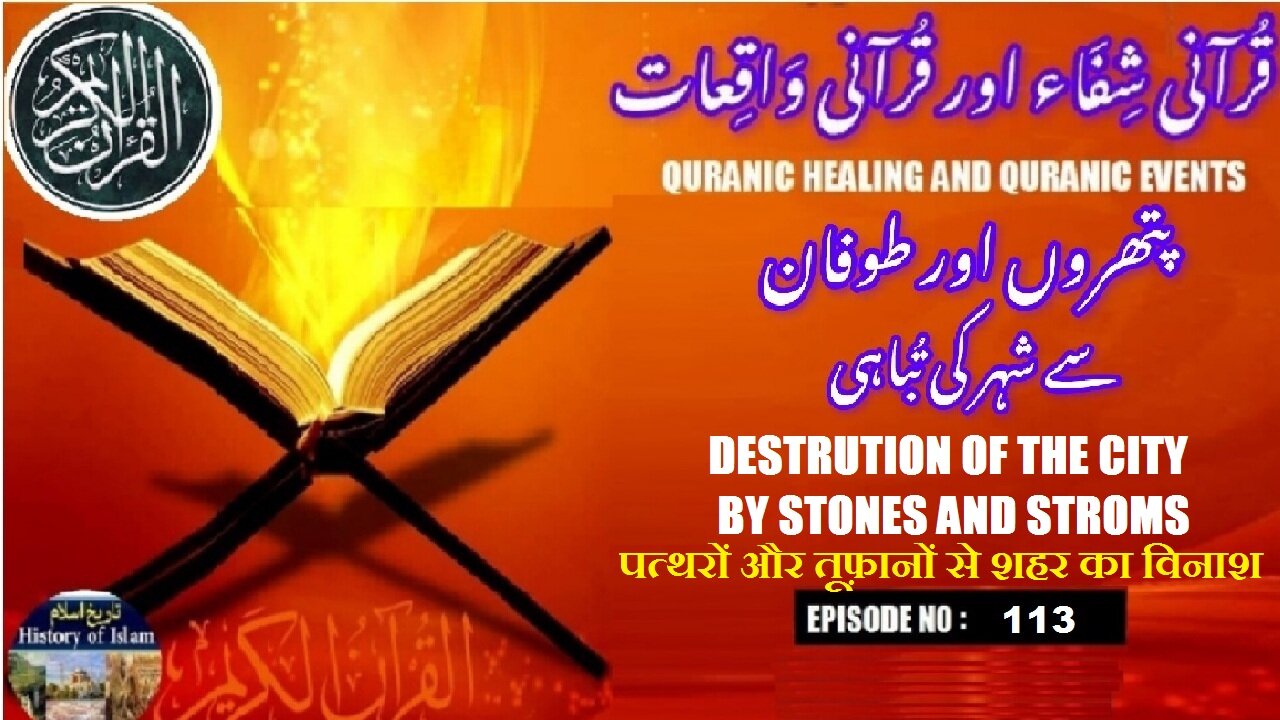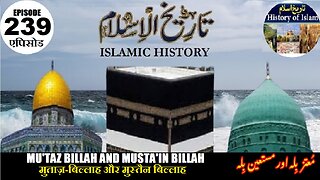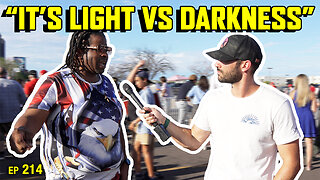Premium Only Content

Destruction of the city by stones and storms پتھروں اور طوفان سے شہر کی تباہی
@islamichistory813 #destruction #city #stones #storm #healing #and #events #from #the #quran #historical #stories #and #events #quranicstories #selfhealing #success #stories #striking #events #in #history #quranstories, #storiesfromthequran #religious #creation #stories #trending #quran #short #historical #loves #historical #heroes #what #is #true #strength #calm #quran #recitation #for #babies #islamic #healing
Destruction of the city with stones and a storm
Brothers, sisters, friends and elders Assalamu Alaikum, wa Rahmatullahi wa Barakatuhu, we are presenting the 113th episode of the Islamic informative video based on healing and events from the Holy Quran,and in this video we will describe, Destruction of the city with stones and a storm
The destruction of a city through a storm of stones and a violent wind is a recurring theme in the Qur'an, serving as a powerful warning to those who defy Allah's commandments and persist in sin and immorality. One of the most striking examples of such destruction is the story of the people of Prophet Lut (Lot, peace be upon him), who were punished for their widespread immorality, particularly homosexuality, disobedience, and denial of the truth brought by their Prophet. Their city was not only overturned but also subjected to a rain of stones and a violent storm, as a divine punishment from Allah.
The Qur’an describes this destruction in several verses. In Surah Hud verses 82-83, Allah says:
So when Our command came, We turned it (the city) upside down and rained upon it stones of layered hard clay, marked from your Lord. And they are not far from the wrongdoers.”
This verse describes how the city was turned upside down, indicating a severe natural upheaval, followed by a shower of stones, each marked for the ones deserving the punishment. The phrase “not far from the wrongdoers is a warning to future generations that the fate of those people is a reminder for others who might follow their path.
Another vivid depiction appears in Surah Al-Hijr verses 73-76:
So the blast overtook them at sunrise. And We made the highest part [of the city] its lowest and rained upon them stones of hard clay. Indeed, in that are signs for those who discern. And indeed, they are [still] on an established road.”
This passage confirms the combination of an overwhelming blast, an earthquake-like overturning of the city, and a rain of stones. The city’s location being on a well-known road is also a reminder to travelers and future people who pass by to reflect on this divine punishment.
In Surah Ash-Shu‘ara verses 173-174, Allah reiterates:
“And We rained upon them a rain \[of stones], and evil was the rain of those who were warned. Indeed in that is a sign, but most of them were not to be believers.”
Here, the term “rain” metaphorically conveys the intensity and inevitability of the punishment. It emphasizes that this was not a natural disaster but a targeted divine punishment for a rebellious nation.
Prophet Lut’s plea and his eventual salvation with his believing family, excluding his disbelieving wife, are highlighted to show the mercy of Allah upon the righteous. Allah says in Surah Al-Qamar verses 33-36:
The people of Lut denied the warnings. Indeed, We sent upon them a storm of stones, except the family of Lut – We saved them before dawn. As a favor from Us. Thus do We reward he who is grateful. And he had certainly warned them of Our assault, but they disputed the warning.”
This event is also mentioned in authentic Hadith literature. The Sahih al-Bukhari, Hadith No. 4726, narrates from Abdullah ibn Abbas (RA):
When the Prophet (PBUH) passed by the ruins of the people of Lut, he would hasten his pace and cover his face, saying: 'Do not enter upon the people who were punished unless you are weeping, lest what afflicted them afflicts you.'
This Hadith shows the seriousness with which the Prophet Muhammad (PBUH) regarded the punishment and its location, advising believers not to be heedless when passing by such sites of divine wrath.
Similarly, Sahih Muslim, Hadith No. 2989, records the Prophet (PBUH) saying:
Verily, the most severely punished people on the Day of Resurrection are those who were punished in this world with a punishment like that of the people of Lut."
This Hadith draws a direct connection between the gravity of their sin and the severity of their punishment, both in this world and the Hereafter.
Thus, the destruction of the city of Lut’s people through a storm of stones and a violent upheaval is not just a historical incident but a divine warning and a moral lesson for all of humanity. These verses and hadiths teach that communities indulging in blatant immorality, especially when they reject divine guidance, risk invoking the wrath of Allah. The message is clear repentance, obedience to divine law, and adherence to moral integrity are the means to avoid such catastrophic ends.
With this, we ask for your permission until tomorrow and pray to Allah Almighty to grant us the ability to act on the Quran and Hadith, Amen
Allah Hafiz
===================================
-
 14:42
14:42
ISLAMIC HISTORY
1 day agoIslamic History Episode 239 Mu'taz-Billah & Mustain Billah मुताज़ और मुस्टेन معتز بلہ اور مستعین بلہ
17 -
 1:32:21
1:32:21
JTtheSG
3 hours agoLIVE Replay - Ready To Play VOID BREAKER
6.66K -
 4:43:17
4:43:17
DoldrumDan
6 hours agoNEW STREAM SCHEDULE 3PM EST TO 7PM EST EVERY DAY
28K5 -
 3:45:41
3:45:41
Sgt Wilky Plays
4 hours agoSunday Finals | Regiment Donor Drive
15.9K1 -
 LIVE
LIVE
Ouhel
6 hours agoSUNDAY | Active Matter | Exploring the postapocalyptic | O'HELL LIVE
48 watching -
 LIVE
LIVE
Astral Doge Plays!
7 hours agoFinal Fantasy IX ~LIVE!~ Iifa Tree Visitation Hours
31 watching -
![[Classic] Pac-Man World Re-Pac 1 and 2 👻 🟡 🟡 🟡 Relaxing on Sunday](https://1a-1791.com/video/fwe2/7a/s8/1/W/5/8/l/W58lz.0kob-small-Classic-Pac-Man-World-Re-Pa.jpg) 6:15:30
6:15:30
J0hnThunder
6 hours ago $1.30 earned[Classic] Pac-Man World Re-Pac 1 and 2 👻 🟡 🟡 🟡 Relaxing on Sunday
18.4K1 -
 LIVE
LIVE
Lofi Girl
2 years agoSynthwave Radio 🌌 - beats to chill/game to
138 watching -
 4:23:27
4:23:27
TonYGaMinG
9 hours ago⚔ Trying out this NEW game called " SWORN " ⚔
48.8K4 -
 29:27
29:27
James Klüg
2 days agoAmericans Remembering Charlie Kirk
45.6K9